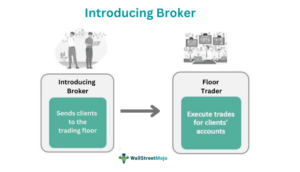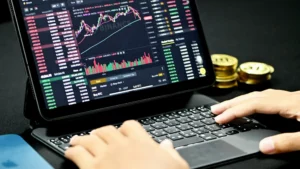CFDs enable traders to use leverage to magnify their profits with minimal initial capital. Investors looking to amplify gain and loss potential on trades may consider trading on margin. Margin trading is the practice of borrowing money, depositing cash to serve as collateral, and entering into trades using borrowed funds. Through the use of debt and leverage, margin may result in higher profits than what could have been invested should the investor have only used their personal money. On the other hand, should security values decline, an investor may be faced owing more money than what they offered as collateral.
AxiTrader is not a financial adviser and all services are provided on an execution only basis. Information is of a general nature only and does not consider your financial objectives, needs or personal circumstances. Important legal documents in relation to our products and services are available on our website.
- Before jumping into spot trading, one needs to have an understanding of these three terms related to it.
- Most P2P platforms require buyers and sellers to create bids and offers using these preferences to enable trades to occur more smoothly.
- Any references to past performance and forecasts are not reliable indicators of future results.
- The top 50 cryptocurrencies by market capitalisation are generally the most popular and traded in the spot market, with Bitcoin as the clear market leader.
Axi makes no representation and assumes no liability regarding the accuracy and completeness of the content in this publication. Spot trading allows you to buy cryptocurrencies, such as Bitcoin (BTC) and Ether (ETH), with your local currencies or trade across several cryptocurrency trading pairs. This guide will teach you about spot trading in crypto and how it works. Learn more about what spot and margin trading are, their pros and cons, and how you might choose between the two. However, information about the availability of this tool, as well as the ability to use it, is undeniably important.
The trader will have to come up with $35 by either selling some ETH or putting in more of their own money in order to bring the equity back up to the margin requirement. If they fail to meet the margin call, then the exchange or trading platform can forcibly sell the ETH in the account to help pay down the loan. The assets that a trader has in their account are used as collateral for a loan. If the trader fails to meet a margin call, the exchange or trading platform can sell the assets (also referred to as liquidation) in the account and use the proceeds to pay down the loan. The settlement date (sometimes referred to as the spot date) is when the assets involved in the transaction are actually transferred.
Similar to traditional stock exchanges and online brokerages, centralised exchanges conduct large-scale cryptocurrency transactions using the order book model to match buyers and sellers. While P2P comes with good benefits, the trading environment can be risky without third parties facilitating trades via escrow services between traders. P2P trading can also suffer from low liquidity and slow settlement time. P2P trading gives you more control over your trading activities like choosing sellers, buyers, settlement time, pricing, and payment methods.
Isolated margin is another approach where you set a separate margin for each trade and essentially only risk that amount. This allows you to manage the level of risk for each position independently of the others, that is, reduce the risk of total losses. This is especially appropriate in the case of opening positions on different markets and different cryptocurrency pairs. Spot trading is the most common form of crypto trading and is popular among traders who want to take advantage of short-term price signals in the cryptocurrency market.
This means that you can automatically take on debt by trading more than your spot balance and repay it with ease – either by depositing the borrowed currency or trading back. This grants you the flexibility and control to manage your capital efficiently. In this article, you will find a brief discussion about spot and margin trading in crypto space and key differences between them. There are several cryptocurrencies that traders actively trade on top crypto platforms. The top 50 cryptocurrencies by market capitalisation are generally the most popular and traded in the spot market, with Bitcoin as the clear market leader.
There may not be a fixed repayment schedule, and your broker’s maintenance margin requirements may be simple or automated. For most margin accounts, the loan is open until the securities are sold in which final payments are often due to the borrower. All examples listed in this article are for informational purposes only. You should not construe any such information or other material as legal, tax, investment, financial, or other advice. Nothing contained herein shall constitute a solicitation, recommendation, endorsement, or offer by Crypto.com to invest, buy, or sell any coins, tokens, or other crypto assets. Returns on the buying and selling of crypto assets may be subject to tax, including capital gains tax, in your jurisdiction.
In most cases, the margin stays the same throughout the life of the loan, but the index rate changes. To understand this more clearly, imagine a mortgage with an adjustable rate that has a margin of 4% and is indexed to the Treasury Index. If the Treasury Index is 6%, the interest rate on the mortgage is the 6% index rate plus the 4% margin, or 10%. In a general business context, the margin is the difference between a product or service’s selling price and the cost of production, or the ratio of profit to revenue. Margin can also refer to the portion of the interest rate on an adjustable-rate mortgage (ARM) added to the adjustment-index rate. The simplest way to engage in spot trading is to use a centralized exchange (CEX) or a decentralized exchange (DEX) to place the trade.
The profit (or loss) is calculated by multiplying the value of the change in the asset by the quantity. OTC spot markets are usually private and less regulated than the exchange landscape. Moreover, they allow traders to buy and sell Crypto Spot Trading Vs Margin Trading Which Is Better larger amounts of crypto without moving the market price too much. Thanks to the volatility of the crypto markets, savvy traders are enjoying speculating on their price movements in hopes of finding positive trading opportunities.
In spot margin trading, traders can borrow funds from the exchange or other parties to increase their trading power and potentially amplify their profits. Traders can take advantage of spot margin trading to open positions that exceed their available capital. However, it’s crucial to understand that this approach carries an increased risk of potential losses, as losses can be amplified just like potential profits.
Spot trading and margin trading are two distinct and powerful approaches to trading in the cryptocurrency markets. Spot trading involves buying and selling assets for cash, while margin trading involves borrowing funds to buy or sell assets, with the use of leverage. Each approach comes with its different advantages and risks, and it’s important for traders to understand these differences before deciding which approach to take. CEXs also provide custody services by allowing you to deposit and store your crypto assets on their platform. Through centralised exchanges, you can enjoy higher liquidity on your preferred asset, fast trading times, security, and customer protection. For providing these services, CEXs charge users transaction fees on every trade they make.
Currently, CEXs are the most utilised form of accessing the crypto spot market. Spot and spot margin trading provides traders with multiple ways to hedge their positions. For example, if traders believe that SOL might increase in price and they have a leveraged short open, traders can buy SOL on Drift’s spot market and decrease their short exposure to the market. Spot and spot margin allows traders to offset the potential for losses and effectively manage their risk on-chain. Spot trading is the most straightforward arena, closest to buying and selling in a traditional market. This type of exchange offers traders a platform to directly buy and sell cryptocurrencies at real-time market prices.
By law, your broker is required to obtain your consent to open a margin account. The margin account may be part of your standard account opening agreement or may be a completely separate agreement. An initial investment of at least $2,000 is required for a margin account, though some brokerages require more. The delivery of the assets is immediate and the transaction settles on-chain. Once the spot trade has been confirmed, the settlement will be instantaneous, and you will be able to see the increase or decrease in the asset immediately in your account balances. The other key disadvantage of margin trading is the risk of getting margin calls.






